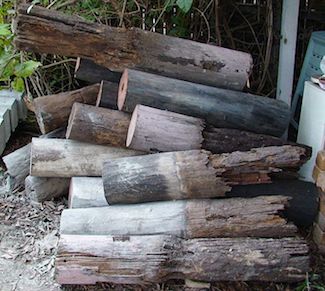Are Termites Actually Attracted to Wood?
By Chris Williams on August 8, 2014.
I found a termite nest in a stump in our yard. That got me to wondering how termites find the wood that they infest. If they’re attracted to some chemical put out by the wood, it seems like the wood in our homes could be coated with something so that termites couldn’t detect it. B. K., Millville, MA

Wood from a house eaten by termites
There’s a lot we don’t know about how termites find their food. If we knew exactly what attracts termites to the wood in our homes, we would find a way to block that attraction. We do know that subterranean termites are not actually attracted to wood. The foraging behavior of subterranean termites is mostly random; they simply wander until they find a suitable food source.
Why Your Home Needs Termite Protection
Research shows that termites don’t detect wood from any great distance. Maybe that’s good news since it means that the termites in the ground in your yard (and yes, there are termites there) don’t know about the wood in your house. But, it also means that termites are not even attracted to the wood in our termite bait stations. They have to literally stumble upon a bait station and begin feeding on the wood inside.
Researchers say that there is some method to the termite’s madness, however. Foraging termites seem to construct a system of branching tunnels in the soil. These exploratory tunnels expand out in a starburst pattern and help to eliminate repeat searches in the same areas. It is because of this searching system that we have faith that termites will eventually find the inground bait stations around your home. Their relentless foraging is also the reason that your home needs to be protected.
According to some research, termite foraging isn’t totally random because they do seem to respond to certain soil changes such as moisture, temperature, soil texture, and even chemical odors emitted by plants and decaying wood. Like many insects, termites tend to move along edges and follow underground objects like roots, pipelines, conduits, and the edges of pavement. This behavior often leads them directly to entry points into a building.
A Pheromone Trail Draws Other Termites
As a termite forages looking for wood, it secretes pheromones along the way. When food is found, that pheromone trail is reinforced. This draws other worker termites that put down even more pheromone odors along the trail to the food source. The termite colony’s random foraging behavior has now changed to a more structured behavior of recruiting and feeding on the newfound food source. If that food source is the wood in a termite bait station, workers begin feeding on the bait and also carry it back to the colony where they feed it to others.
By Lady alys (Own work) [CC-BY-SA-3.0 or GFDL], via Wikimedia Commons